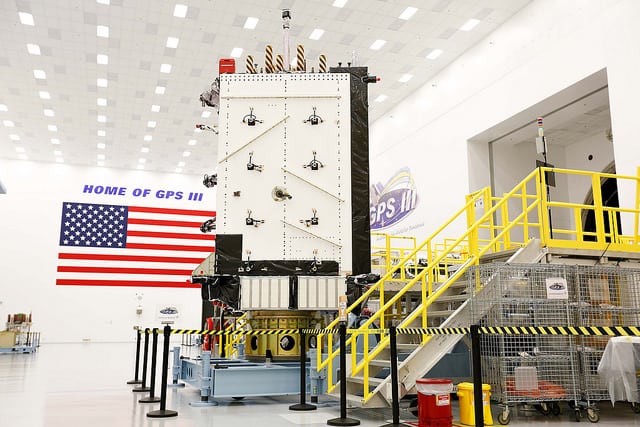Latest News

GPS3 SV02 at Lockheed Martin’s manufacturing facility near Denver, Colorado. Photo: Lockheed Martin.
Lockheed Martin’s second, fully-assembled GPS 3 Space Vehicle (SV) completed a realistic simulation of its future launch experience and passed this critical acoustic environmental test with flying colors on July 13, the company stated on Sept. 5.
During acoustic testing, technicians continuously blasted the GPS 3 SV02 satellite with sound reaching 140 decibels in a specialized test chamber equipped with high-powered horns. For comparison, that is a volume equivalent to an aircraft carrier deck. Human hearing starts to be damaged at about 85 decibels.
GPS 3 SV02 is Lockheed Martin’s second GPS 3 satellite to successfully complete acoustic testing. The company’s first satellite, GPS 3 SV01 — which is in storage awaiting its expected 2018 launch — completed acoustic testing in 2015.
The GPS 3 SV02 satellite is now being prepared for Thermal Vacuum (TVAC) testing this fall, where it will be subjected to extreme cold and heat in zero atmosphere, simulating its on-orbit life. Lockheed Martin expects to deliver the satellite to the U.S Air Force in early 2018.
The GPS 3 SV02 satellite is part of the U.S. Air Force’s next generation of GPS satellites, which will have three times better accuracy and up to eight times improved anti-jamming capabilities. Spacecraft life will extend to 15 years, 25 percent longer than the newest GPS satellites on-orbit today. GPS 3’s new L1C civil signal also will make it the first GPS satellite to be interoperable with other international global navigation satellite systems, according to Lockheed Martin.
Get the latest Via Satellite news!
Subscribe Now